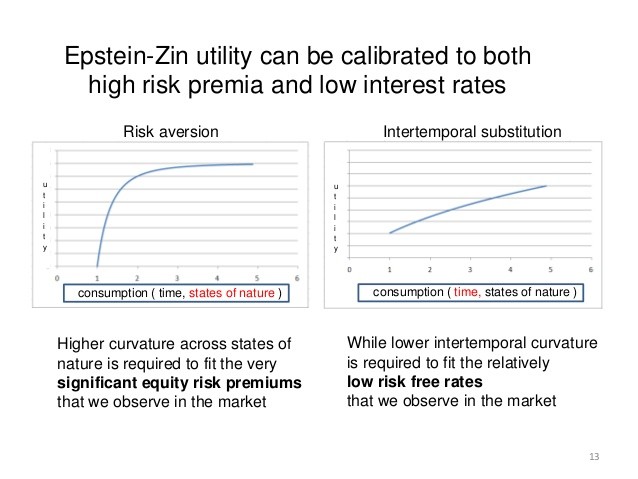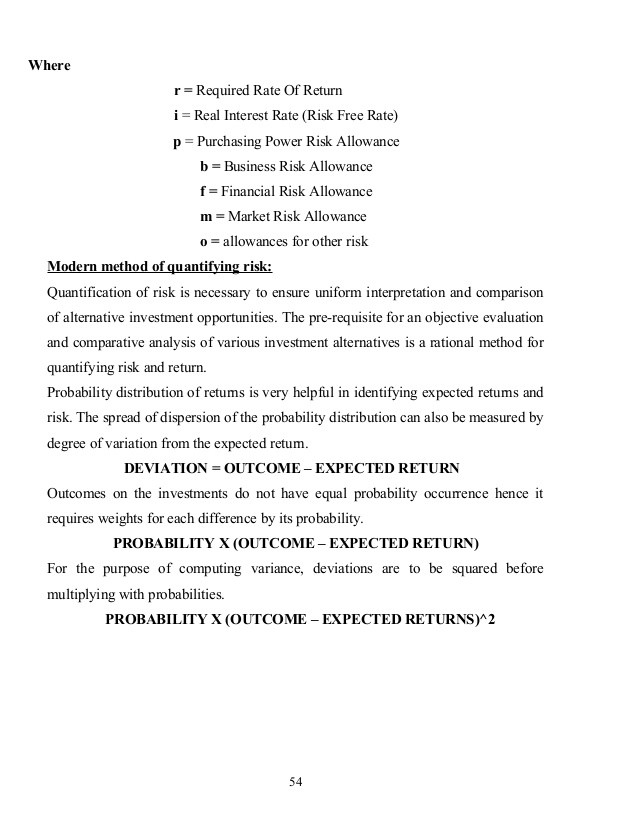Equity Risk Premium (ERP) and Required Return on Equity Finance Train
Post on: 30 Май, 2015 No Comment

The ERP is the amount of return required by an investor above and beyond the risk free rate, where the risk free rate is commonly the rate of return from a sovereign government bond with a maturity comparable to the investor’s time horizon.
Historical Estimates for ERP. this approach calculates the ERP based on historical returns of a stock market index above government bond returns over a sample period of time.
Analysts may adjust a historical ERP to remove biases that could be present in the sample.
Forward Estimates for ERP. this is an ex-ante approach where the ERP is based on current data about expected future returns.
Forward ERP estimates can be based on a Gordon Growth Model, macroeconomic statistical models, or a survey of experts. Each technique has its own strengths and weaknesses.
Required Return on Equity
An investor’s required return on equity (or common equity as it is sometimes stated) is the total amount of return that an investor will demand in order to make the stock investment that is under consideration. Generically, this amount reflects the risk free rate plus the appropriate equity risk premium.
Several methods for calculating the required return on equity will now be described.
Capital Asset Pricing Model (CAPM) and Beta
The CAPM model applies the risk free rate and a broad market equity risk premium, but goes on to make a security specific adjustment to the market ERP, called beta, based on the individual security’s sensitivity to broad market equity risk premium.
CAPM r common equity = r risk free + β * (ERPmarket )
Under CAPM, ERP is the broad market return minus the risk free rate of return.
When a stock is described as “high beta” this means the stock has a heightened sensitivity to changes in the value of the broader market.
A stock with a beta equal to one has returns that move in lock step with the broad stock market.
Beta (β) is commonly calculated from a least squares regression of the individual stock’s returns on the broad market index’s returns. CAPM is a form of a single factor regression model.
In valuing stocks an analyst is looking to the future; in respect for this the historical beta is often adjusted when determining the required return on equity.
Adjusted beta = 2/3 historical beta + ((1/3)*(1.0))
Beta for a non-public company
1) Un-lever the beta of a publicly traded peer company
β non-public company = (1 + D/E non-public co. ) * β U peer
Multifactor Models
Some analysts might feel that the single variable relationship of an individual company to a broad market index is insufficient in calculating a required return for equity. Other models and theories, such as arbitrage pricing theory will use multiple variables to calculate return.
Fama-French Multifactor (FFM) Model
FFM is a three factor model.
r ce = r f + (β mkt * ERP) + (β size * SMB) + (β value * HML)
ERP: market factor. Similar to basic CAPM, this is the equity return premium of the broad market over the risk free rate of return; also noted as RMRF (return of market minus return of risk free rate).
SMB: size factor. It represents the average returns of three small cap stock portfolios minus the average return of three large cap portfolios. SMB is the small cap return premium.
HML: value factor. It represents the average return from two high book value to market value portfolios minus the return of two low book value to market value portfolios. HML is a value premium.
Pastor-Stambaugh Model
PSM is a four factor model that adds one additional factor to FFM, a liquidity factor. The liquidity factor incorporates the excess returns to a portfolio by shorting high liquidity stocks to invest the proceeds in low liquidity stocks.
Macroeconomic Multifactor Models
Such models apply macroeconomic variables to derive a required rate of return (or cash flow discounting rate) for a stock.

One example is the BIRR Five Factor model, which applies the following five factors on top of the risk free rate: confidence risk, time horizon risk, inflation risk, business cycle risk, and market timing risk.
Build-up Method
The build-up method can be used for privately held companies.
In calculating the required return, this approach starts with the risk free rate and equity risk premium, and then adds one or more additional premiums or discounts without adjusting these premiums for beta.
International Issues for Required Return on Equity
When investing in foreign stocks, the domestic investor introduces currency risk to the portfolio, as exchange rate movements will impact returns.
Emerging market investing presents complications beyond currency movements, as stock ownership can be highly concentrated and volatility can be extreme and persistent.
Two approaches for estimating emerging market returns:
1) Country Spread Model = ERP developed market + country premium
2) Country Risk Rating Model. This approach uses a regression model to determine the relationship between developed market equity returns and semi-annual risk ratings for the country in question.
Weighted Average Cost of Capital (WACC)
WACC is the weighted average costs of a firm’s debt and equity financing.
WACC is relevant when considering total firm value (not just equity value) and can be used as a discount rate for cash flows to all suppliers of capital.
WACC = (Market Value of Debt / (MVD + Market Value of Common Equity)* r debt * (1- tax rate))) + (MVCE / (MVD+MVCE) * r ce )))
In selecting an appropriate discount rate, the analyst must consider the cash flow. If the cash flow has been adjusted for interest payments, then an equity return rate would be appropriate. If the cash flow is available to all capital holders, then WACC would be appropriate.
Previous Article Equity Return Measures














